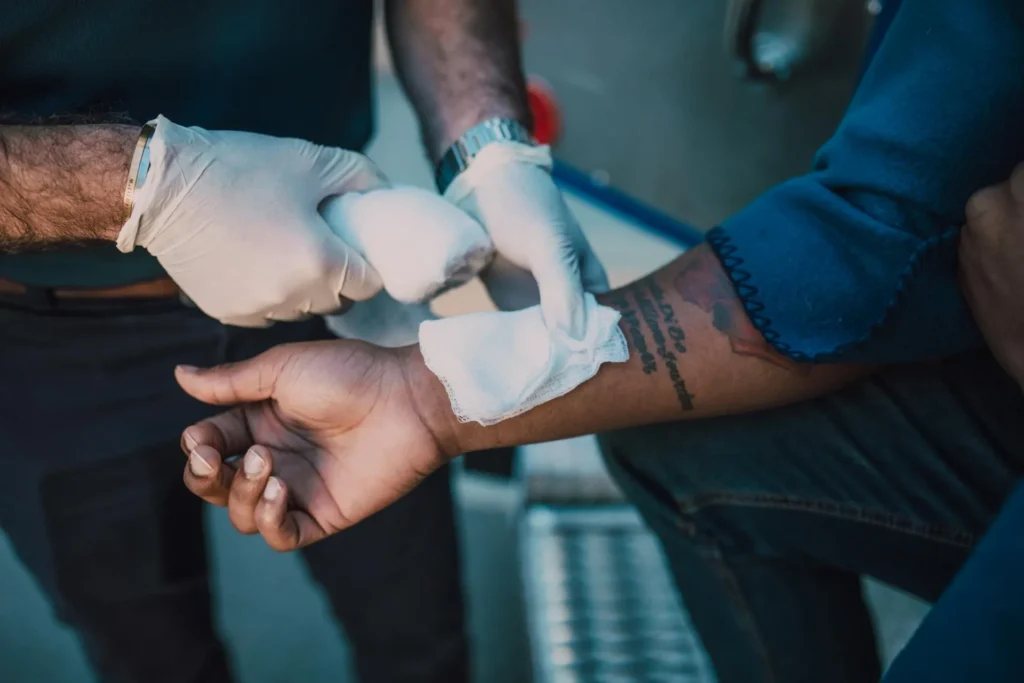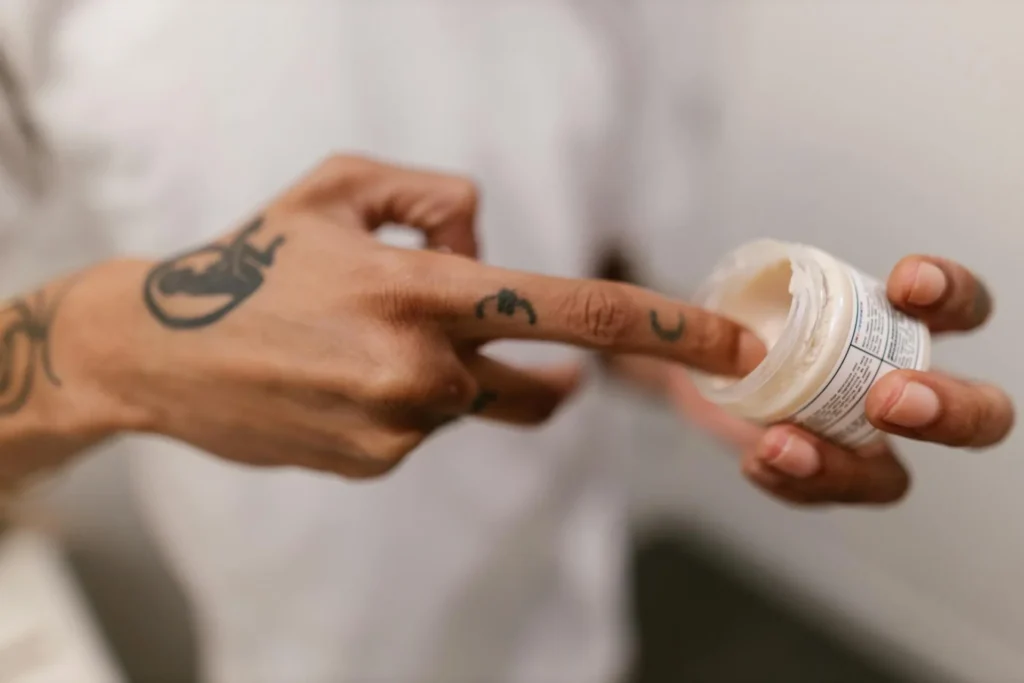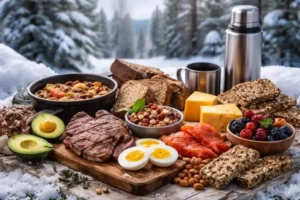Disclaimer: This article provides general information on tattoo aftercare and should not be considered medical advice. For any medical concerns regarding your tattoo, please consult a healthcare professional
Over the years, tattoos have been used as a form of self-expression through permanent body art. Whether you’re about to receive your first tattoo or have several on your body, it’s critical to understand tattoo aftercare to ensure your tattoo heals properly and retains its luster for a long time. Following proper body art aftercare procedures helps speed up the healing process and reduces the risk of infections or complications. This article offers guidance for the entire tattoo aftercare journey.
Healing Process: What to Know
Before looking into the steps for aftercare, it is essential to understand the healing process and the potential health effects of tattoos. Healing is a delicate journey that typically takes anywhere from two to four weeks, depending on factors such as the size and placement of the tattoo, as well as the individual’s skin type. Initially, the tattoo may appear red and feel warm, with some swelling, followed by scabbing and eventual peeling. To keep your ink vibrant and free from infections, aftercare needs to be taken seriously at every stage.
Preventive Steps: The First Day
The first day is essential for defining how your tattoo’s healing process will progress. As part of body art aftercare, most tattoo artists will cover the dermal design with a bandage or plastic wrap. These protective coverings help avoid the entrance of bacteria into the fresh tattooed area, lowering the likelihood of infection.

1. Do Not Remove Bandage: Ensure that you follow all instructions provided by your artist on how long the bandage must remain on. Usually, it is suggested to leave it for at least a couple of hours.
2. Clean Softly: Clean your hands thoroughly, and after removing the bandage, gently wash the dermal design with a mild soap and some lukewarm water. Do not scrub the area; use a clean paper towel to pat it dry.
The First Half Month: Helping the Skin Heal
Within this timeframe, the tattooed area will most likely start scabbing and experience itchy sensations. Most importantly, you should restrain yourself from tearing at the scabs, as this will lead to scar creation and loss of color.
Do not apply a thick layer of the lotion. Over-hydrating the area can cause damage to the skin. Let’s explore the best ways to take care of your ink:

1. Avoid Direct Sunlight: Avoid direct sunlight in the area with tattoo marking, as UV rays may cause it to irritate and fade. When outside, clothing should be worn to cover the Skin art adequately.
2. Wear Loose Clothing: During the healing period, skin breathing becomes very important. Therefore, wearing tight clothing that abrades the skin will slow down the recovery period. Go for free fit clothes instead.
Long-term Care: Ensuring Longevity
Maintaining your body ink involves a lifelong commitment to proper tattoo aftercare. A well-cared-for tattoo looks great, but without adequate body art aftercare, it requires extra effort to keep it looking its best.
- Skin Hydration: Make sure to moisturize the skin well and often, especially as the Skin art ages. This will avoid the tattooed skin from drying up and the colors from fading prematurely.
- Sun Protection: Always use high SPF sunscreen to protect the skin from sun exposure. This will significantly reduce ultraviolet damage caused by the sun and keep the ink tattoo intact.
- Stay Hydrated: Avoid unnecessary skin damage by taking plenty of water to maintain a well-hydrated body and healthier skin on the tattoo.
Common Mistakes to Avoid
Taking care of a newly done tattoo isn’t hard, but it does come with its own set of challenges:
- Too Strict Cleaning Protocols: Skipping treatment is not recommended; however, being too strict all the time can have detrimental consequences, such as stripping skin of its natural oils, causing dryness and irritation.
- Ignoring A Problem: Many people do not pay too much attention to some symptoms, which in some cases is highly advisable. These can include signs of itching or swelling due to the use of aftercare products, which are indicators of potential allergies. See a dermatologist if this sounds like something you’d prefer.
- Failing To Follow: It’s very common to neglect the advice given by your tattoo artist so make sure to follow the aftercare instructions. A good tattoo artist will always know what works best for you, so trust their expertise.
When to Go to A Professional
If you are dealing with an inflammation of the eye or encounter a purple, livid, or painted area around your ink, you would want to seek medical advice immediately. Be sure to seek advice early to avoid serious complications later on. In some cases, individuals may change their minds and decide they don’t want to keep their body art after all. For those looking to alter or remove their body art, Melbourne tattoo removal services are readily available.
Conclusion
Taking care of your ink is essential for preventing complications, and understanding the health effects of tattoos can help ensure a safe healing process. By following body art aftercare instructions, understanding the healing stages, and avoiding common mistakes, your tattoo can be cherished for a long time as a work of art. Remember, a properly cared-for tattoo whether a classic design or something more unique like fishing tattoos is a true testament to your commitment to its craftsmanship and meaning.










